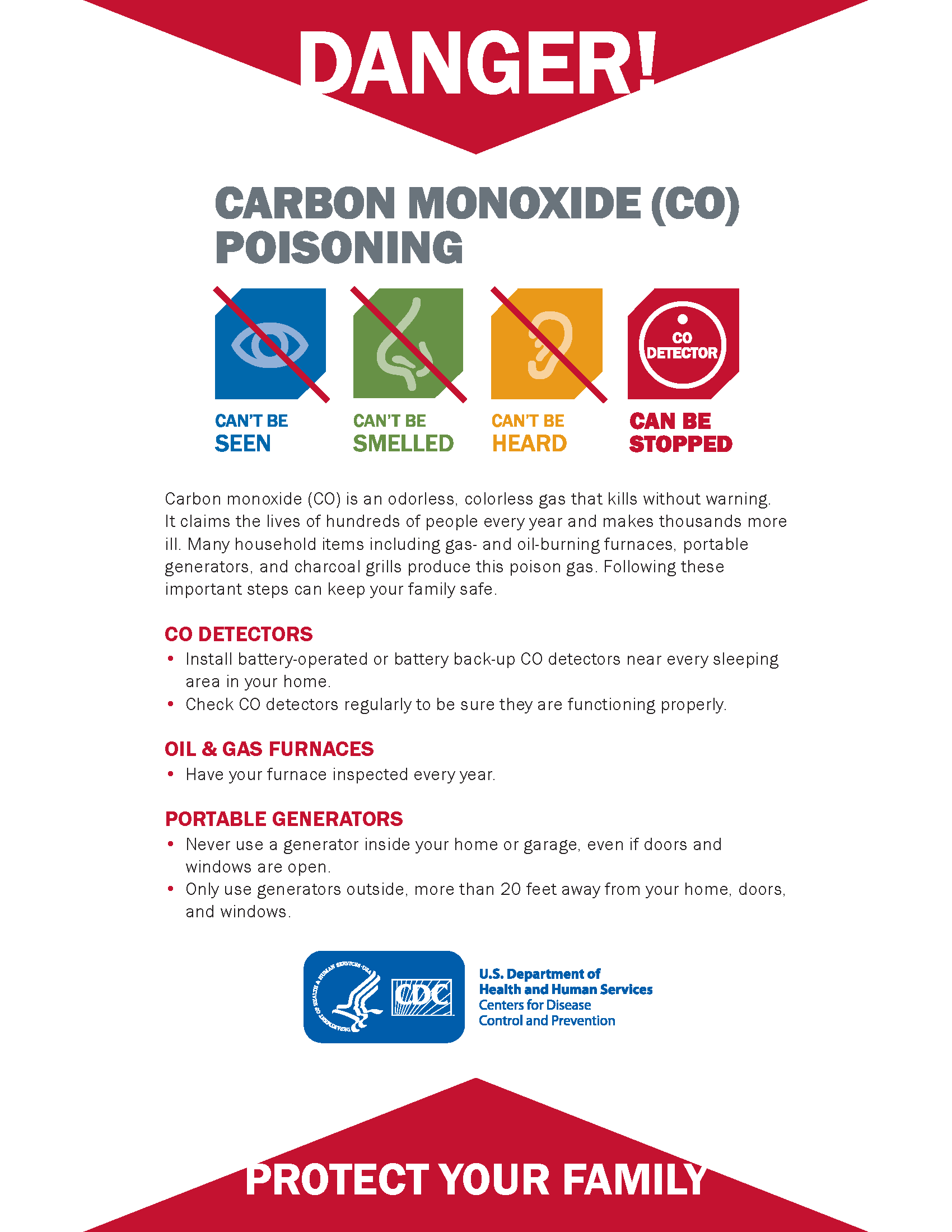Carbon Monoxide: What’s the Risk?
Often called the "silent killer", Carbon Monoxide (CO) can’t be seen, smelled, or tasted. This invisible, odorless, and tasteless gas occurs when fuels don’t burn completely. As we head into colder months, when heating systems are in full swing, fireplaces are being lit, and generators might be used, it’s a great time to review the dangers of CO and how your family can prevent toxic poisoning.
The Dangers of Carbon Monoxide Exposure
When inhaled, carbon monoxide enters your bloodstream and attaches to hemoglobin, the molecule in red blood cells that carries oxygen. This effectively suffocates your body at a cellular level, depriving your brain and heart of the oxygen they need to function.
Some symptoms of CO poisoning can be:
Headache: Often the first and most common symptom.
Dizziness and Nausea: Feeling lightheaded or sick to your stomach.
Weakness and Fatigue: Unexplained tiredness.
Shortness of Breath: Difficulty breathing.
Confusion: Impaired judgment or disorientation.
Blurred Vision: Visual disturbances.
Loss of Consciousness: In severe cases, leading to coma and death.
Because these symptoms are so generic, your family may not even realize CO poisoning is happening. Prolonged exposure, even to low levels, can lead to permanent brain damage or heart problems. High concentrations can cause unconsciousness and death within minutes.
Common Sources of Carbon Monoxide in the Home
Carbon monoxide can be produced by any fuel-burning appliance if it's not properly maintained or ventilated. Common sources in and around the home include:
Furnaces and Boilers: Especially if they are old, cracked, or improperly installed.
Gas Water Heaters: Similar to furnaces, issues with venting can lead to CO buildup.
Fireplaces and Wood-Burning Stoves: Blocked chimneys or insufficient airflow.
Gas Ovens and Ranges: Using a gas oven for heating can be extremely dangerous.
Clothes Dryers: Gas-powered dryers with obstructed vents.
Space Heaters: Kerosene or gas space heaters used in poorly ventilated areas.
Automobile Exhaust: Running a car in an attached garage, even with the garage door open, can allow CO to seep into the home.
Generators: Portable generators are a significant source of CO poisoning, especially when used indoors or too close to a home.
Essential Prevention Tips to Protect Your Family
1. Install Carbon Monoxide Detectors
This is the single most important step you can take. CO detectors are your first line of defense, acting like smoke detectors but for carbon monoxide.
Placement: Install battery-operated or battery-backup CO detectors on every level of your home.
Maintenance: Test your CO detectors monthly, just like smoke detectors, and replace batteries at least once a year.
2. Professional Appliance Maintenance
Regular professional check-ups for your fuel-burning appliances are critical.
Annual Inspections: Have your furnace, water heater, and any other gas or oil-burning appliances inspected by a qualified technician annually.
Chimney Sweeping: If you have a fireplace or wood stove, have your chimney inspected and cleaned by a certified sweep at least once a year to prevent blockages.
3. Proper Ventilation and Usage
Be mindful of how and where you use fuel-burning items.
Never Use Generators Indoors
Maintain Clear Vents
No Charcoal Indoors
Car Exhaust is Deadly
Space Heater Safety
What SHOULD YOU Do If Your CO Detector Alarms?
If your carbon monoxide detector goes off, take it seriously.
Evacuate Immediately: Get everyone, including pets, out of the house and into fresh air.
Call for Help: Once outside, call 911.
Do Not Re-enter: Do not go back inside until emergency responders have determined it's safe to do so. They have specialized equipment to measure CO levels.
Seek Medical Attention: If anyone in your household is experiencing symptoms of CO poisoning, seek medical attention immediately.
The Bottom Line
Carbon monoxide poisoning is a preventable tragedy. By investing in CO detectors, maintaining your appliances, practicing safe usage of fuel-burning items, and knowing what to do in an emergency, you can significantly reduce the risk to your family. Don't let the "silent killer" catch you off guard.




